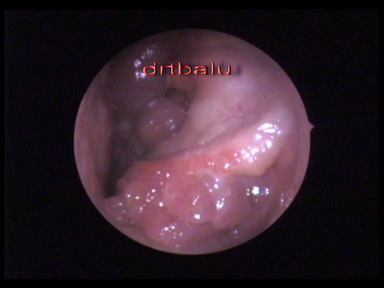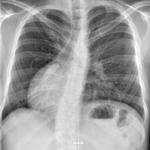Kartagener's syndrome
34 years old male patient
C/o. 1. Nasal block since childhood
2. Recurrent attacks of upper respiratory infections since childhood
3. Sterility
4. Recurrent episodes of wheezing
O/E.
Patient had a broad nasal bridge with telecanthus (i.e. increased interpupillary distance)
This picture shows the patient with telecanthus (Increased interpupillary distance)
This feature (telecanthus) is common in patients who have nasal polyposis since childhood. The presence of nasal polypi causes a splaying effect on the nasal bones causing an increase in the interpupillary distance (telecanthus).
Both the nasal cavities of the patient was found to be filled with multiple polypi.
His seminal analysis revealed azoospermia.
Clinical diagnosis: Kartagener's syndrome
Discussion:
Kartagener's syndrome is a symptom complex showing
1. Bilateral nasal polypi
2. Azoospermia
3. Dextrocardia
4. Situs inversus totalis (reversal of abdominal contents)
5. Bronchiectasis
This disease has an autosomal recessive mode of inheritance. The primary defect lies in the ciliary mechanism of the body. The cilia present in the body (in the nose, lungs, sperms) do not beat normally leading to this defect.


